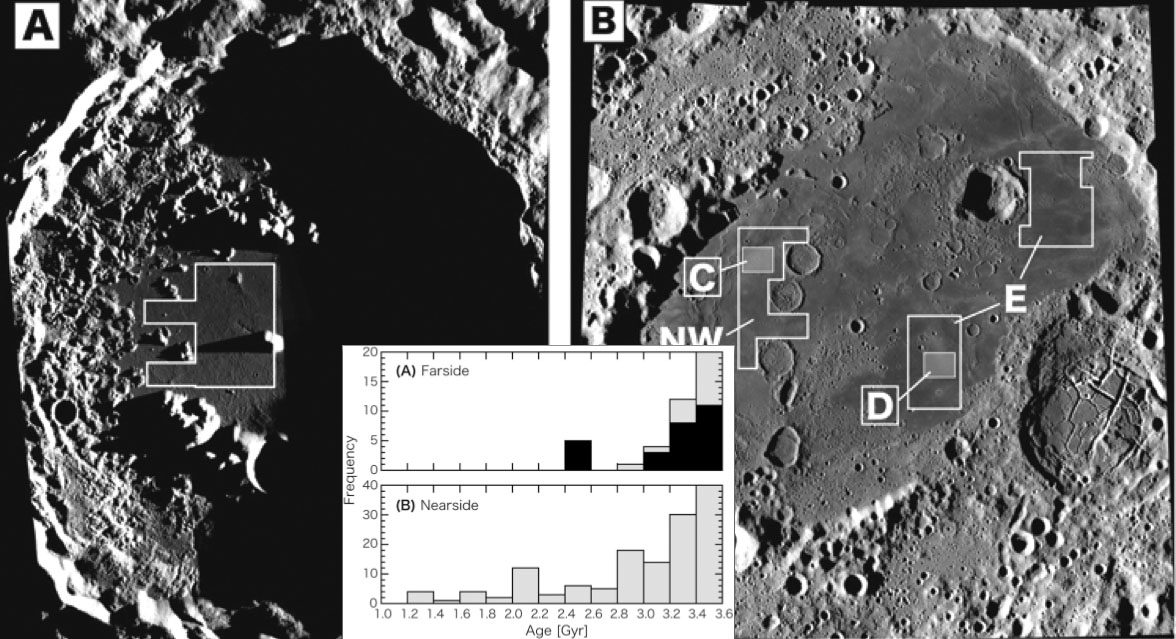Difference between revisions of "November 8, 2008"
| Line 6: | Line 6: | ||
<em>Kaguya illustrations (Antoniadi to left and Moscovience to right) from [http://www.sciencemag.org/cgi/content/abstract/1163382v1?maxtoshow=&HITS=3&hits=3&RESULTFORMAT=&andorexacttitle=and&titleabstract=lunar+moon&andorexacttitleabs=or&andorexactfulltext=and&searchid=1&usestrictdates=yes&resourcetype=HWCIT&?sa_campaign=Email/keyauth/--/ Science Magazine]</em><br /> | <em>Kaguya illustrations (Antoniadi to left and Moscovience to right) from [http://www.sciencemag.org/cgi/content/abstract/1163382v1?maxtoshow=&HITS=3&hits=3&RESULTFORMAT=&andorexacttitle=and&titleabstract=lunar+moon&andorexacttitleabs=or&andorexactfulltext=and&searchid=1&usestrictdates=yes&resourcetype=HWCIT&?sa_campaign=Email/keyauth/--/ Science Magazine]</em><br /> | ||
<br /> | <br /> | ||
| − | Kaguya scientists have just [http://www.sciencemag.org/cgi/content/abstract/1163382v1?maxtoshow=&HITS=3&hits=3&RESULTFORMAT=&andorexacttitle=and&titleabstract=lunar+moon&andorexacttitleabs=or&andorexactfulltext=and&searchid=1&usestrictdates=yes&resourcetype=HWCIT&?sa_campaign=Email/keyauth/--/ published] a [[October_24,_2008|second]] discovery from analysis of high resolution images from the spacecraft's Terrain Camera. Measuring impact craters on farside maria they determined that volcanism spanned not just from 3.6 to 3.0 billion years, as previous researchers found. It looks like some of the lavas on the floors of the [http://the-moon.wikispaces.com/Mare+Moscoviense Moscoviense], [http://the-moon.wikispaces.com/Apollo Apollo] and [ | + | Kaguya scientists have just [http://www.sciencemag.org/cgi/content/abstract/1163382v1?maxtoshow=&HITS=3&hits=3&RESULTFORMAT=&andorexacttitle=and&titleabstract=lunar+moon&andorexacttitleabs=or&andorexactfulltext=and&searchid=1&usestrictdates=yes&resourcetype=HWCIT&?sa_campaign=Email/keyauth/--/ published] a [[October_24,_2008|second]] discovery from analysis of high resolution images from the spacecraft's Terrain Camera. Measuring impact craters on farside maria they determined that volcanism spanned not just from 3.6 to 3.0 billion years, as previous researchers found. It looks like some of the lavas on the floors of the [http://the-moon.wikispaces.com/Mare+Moscoviense Moscoviense], [http://the-moon.wikispaces.com/Apollo Apollo] and [[February_25,_2007|Nishini]] crater, are as young as 2.5 b.y. This is not especially surprising, for as their histogram shows, nearside volcanism continued sporadically until 1.2 b.y. ago. Antoniadi is too far south (70° latitude) for the high Sun angles on Clementine images to tell if the "lavas" on it's floor are really mare basalts are if they possibly are impact melts. Because they are contained within a center ring I tend to consider them to be mare material.<br /> |
<br /> | <br /> | ||
<em>[mailto:tychocrater@yahoo.com Chuck Wood]</em><br /> | <em>[mailto:tychocrater@yahoo.com Chuck Wood]</em><br /> | ||
Revision as of 22:25, 22 March 2015
Younger Farside

Kaguya illustrations (Antoniadi to left and Moscovience to right) from Science Magazine
Kaguya scientists have just published a second discovery from analysis of high resolution images from the spacecraft's Terrain Camera. Measuring impact craters on farside maria they determined that volcanism spanned not just from 3.6 to 3.0 billion years, as previous researchers found. It looks like some of the lavas on the floors of the Moscoviense, Apollo and Nishini crater, are as young as 2.5 b.y. This is not especially surprising, for as their histogram shows, nearside volcanism continued sporadically until 1.2 b.y. ago. Antoniadi is too far south (70° latitude) for the high Sun angles on Clementine images to tell if the "lavas" on it's floor are really mare basalts are if they possibly are impact melts. Because they are contained within a center ring I tend to consider them to be mare material.
Chuck Wood
Technical Details
The outlined areas in the images show where craters as small as 200 m across were counted to derive model ages.
Yesterday's LPOD: Blue Moon
Tomorrow's LPOD: A Fence
COMMENTS?
Register, Log in, and join in the comments.



